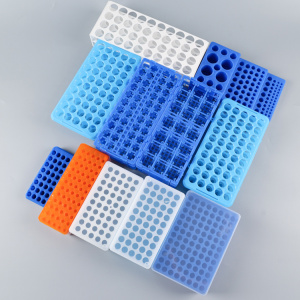Centrifugal tube action cell recovery transfer
Cell resuscitation and cryopreservation is about "slow freezing and fast thawing", when resuscitation must be frozen in liquid nitrogen or -80 ℃ in solidified cell cryopreservation solution quickly thawed to 37 ℃, so that the extracellular freezing ice crystals quickly melted, to avoid the slow melting of ice crystals into the cells to form recrystallization, causing damage to the cells.
Prepare our centrifuge tubes, cell culture flasks, pipettes, and prepare to start resuscitation preparation

● Turn on the water bath and heat to 37℃.
● Put centrifuge tubes (15ml centrifuge tubes), cell culture flasks, and pipettes on the ultra-clean bench, sterilize by UV light for at least 20 to 30 minutes, and blow air for 5 to 10 minutes to remove ozone.
● Preheat the culture medium of the cells to be revived at 37℃, or do not need to preheat the culture medium, and choose according to the cell conditions.
Add about 5 to 10ml of culture medium to the centrifuge tube, take out the cryopreserved cells from the liquid nitrogen tank or -80°C, immediately place the cryo tube in a 37°C water bath and shake it gently, after thawing (about 2min Yes) Immediately transfer the thawed cells to a centrifuge tube containing culture medium, centrifuge at 800-1000 rpm for 5 minutes, discard the supernatant, add an appropriate amount of complete culture medium to resuspend the cells and transfer to a cell culture flask, shake gently The liquid at the bottom of the bottle is evenly dispersed, and the cell name, algebra, and recovery date are marked. After observation under a microscope, put it into a 37°C, 5% CO2 incubator. Generally, adherent cells can adhere overnight, and the medium change and passage time are determined according to different cell growth conditions.
Cell Recovery Considerations
When resuscitating, act quickly to minimize the formation of ice crystals in the cells, which will affect the cell viability after resuscitation.
1. Try not to touch the nozzle when melting, so as not to easily cause pollution.
2. If a lot of cells need to be resuscitated at one time, it can be thawed in a water bath in batches to prevent poor heat transfer and prolong the thawing time of cells.
3. If several kinds of cells need to be resuscitated at the same time, mark the centrifuge tubes and culture flasks in advance, or remember where you place them, so as not to confuse them.



